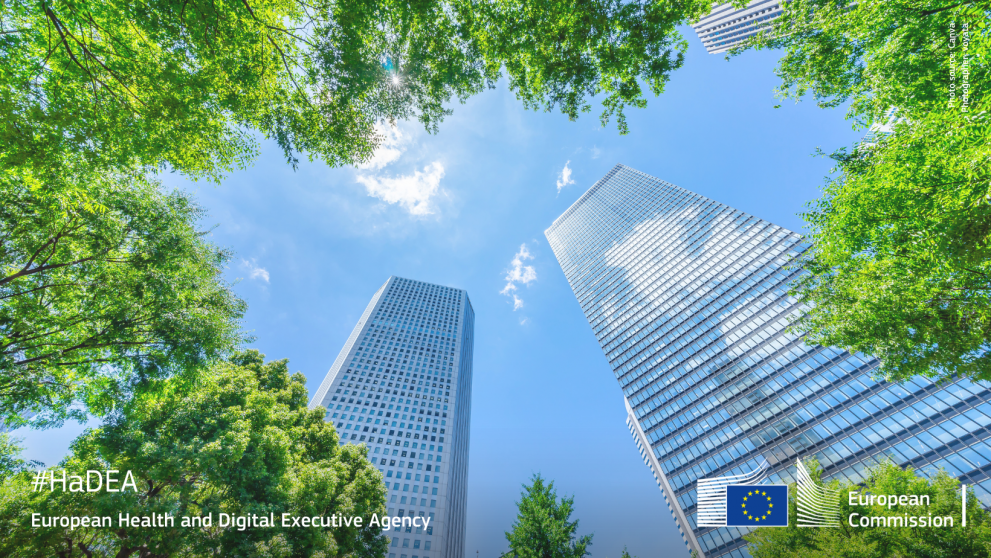
The objective of World Energy Efficiency Day, celebrated annually on 5 March, is to raise awareness about the need to reduce energy consumption through reasonable and sustainable energy use.
The European Commission has identified the building sector as one of the key sectors that could bring a strong contribution by implementing the EU environmental and energy policies. Collectively, buildings in the EU are responsible for 40% of our energy consumption and 36% of greenhouse gas emissions, which mainly stem from construction, usage, renovation and demolition.
Innovative projects funded by the EU can help reduce energy consumption and CO2 emissions, both in relation to new buildings and to the renovation of existing buildings.
Sustainable solutions for energy efficient buildings
- ‘Plus Energy’ houses and buildings can produce more energy – coming from renewable sources such as photovoltaics, wind, etc. – than they use. However, such buildings need to be properly managed and connected to the neighbourhood’s energy distribution networks.
- Innovative insulation materials and solutions based on nanotechnologies and/or advanced sustainable materials can also be developed to offer enhanced insulation properties and environmental performance, responding dynamically to environmental stimuli (temperature, light, humidity, air and biological pollution, etc.).
- Ambitious renovation of the ageing building stock offers huge potential to reduce energy consumption. Building information modelling can be adapted to efficient renovation, and advanced BEM (Building Energy Management) systems are required to reduce energy consumption. Lowering the energy costs for households while increasing in-house comfort will not only help to achieve EU environmental objectives, but will also benefit EU economy and contribute to social well-being.
The Projects
Discover how some of the Horizon 2020 projects managed by HaDEA address these challenges:
- CULTURAL-E aims to define modular and replicable solutions for ‘Plus Energy’ Buildings. They do so by developing technologies and solutions that are customisable to specific contexts and energy demands, as well as performing a comprehensive optimisation of the value/cost ratio of Plus Energy Buildings. Accounting for climate and cultural differences, the project is developing sets of design-for-assembly technologies through a careful mapping of European climates, building archetypes, and cultural energy habits. The Cultural-E solution sets will achieve and maintain the best indoor environmental conditions in ‘Plus Energy’ Buildings at an affordable price.
- BIM-SPEED - Most of the existing building stock has reached the age for renovation: 90% of the total stock was built before 1990 and over 75% of the total floor area of the existing stock can be attributed to residential buildings. How to improve the performance of our building stock on such a scale? BIM-SPEED aims to address this challenge by developing a combination of methodologies and tools with one central information source at its core: the Building Information Model (BIM), a digital representation of a building. This model will be the catalyst for a smarter and more efficient method of deep renovation for the residential building sector.
- RENO-ZEB will provide cost-effective 'plug and play' solutions for a large-scale nearly Zero Energy Building (nZEB) rehabilitation schemes. This will ensure the integrating capabilities of all its components, methodologies, training, guidelines, and demonstration cases. The real and virtual demonstration cases will show and ensure the replicability of the schemes and technical tools to address the valorisation of the building stock before and after nZEB renovation schemes are applied.
- EENSULATE’s goal is to develop an affordable advanced architectural glass to address thermal and acoustic insulation. This solution reduces unwanted energy losses and is suitable for both new and existing buildings. It aims to:
- minimize thermal bridges between curtain walls and sub-structures;
- have cost-effective control of solar radiation and approach to insulate the spandrel;
- allow for an easy implementation on site by reducing the weight of the curtain wall.
Background information
Details
- Publication date
- 4 March 2022
- Author
- European Health and Digital Executive Agency
- Programme Sector
- Industry
- Programme
- Horizon Europe Cluster 4: Industry
- Tags
- EUFunded
- Industrial research
